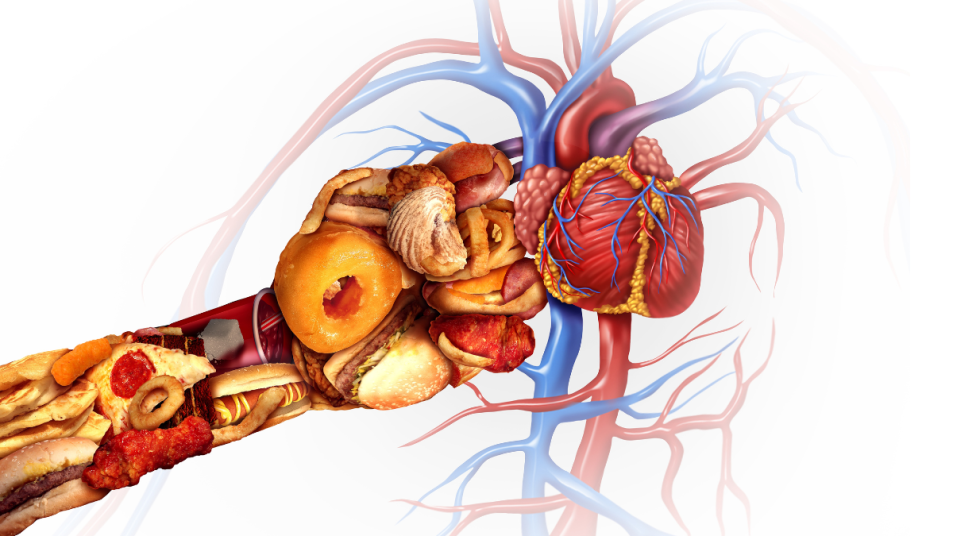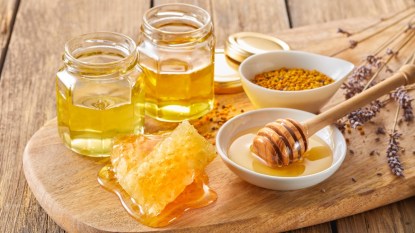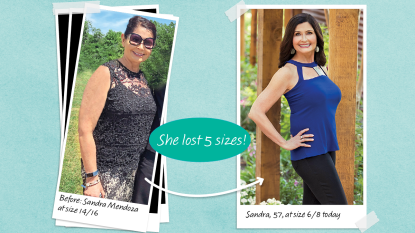Sneaky Salt: 15 Foods You Should Eat Less Often For Better Heart Health
Some foods have more sodium than you may think.

What are the top sources of sodium in your diet? You can probably guess a few —cheeseburgers and cured meats easily make that list. However, there are sneakier sources of sodium that can hide in your diet, driving your daily intake well above the recommended limit. To raise awareness about those “sneaky” salty foods and help you find low-sodium alternatives to eating them, researchers from the University of Toronto (U of T) in Ontario, Canada conducted a study on the foods that contribute the most sodium in the American diet.
Why is this so important? Sodium — the mineral found in table salt, or sodium chloride — is an essential nutrient found in every cell in the body. However, too much of it can lead to high blood pressure, which can eventually cause hypertension (prolonged high blood pressure) and heart disease. Since heart disease is the leading cause of death in the US and over 60 million US women are currently living with it, it’s important to find ways to reduce that risk. Lowering sodium intake is one very important step you can take.
A Closer Look at the Research
To gain an estimate of how much sodium Americans consume daily, the U of T researchers collected data from the US National Health and Nutrition Examination Survey from 2017 to 2018. During the survey, which is conducted annually, participants must recount their diet over the past 24 hours and agree to a health exam.
The U of T researchers looked at data from 7,081 respondents, focusing on their diets and daily sodium intake. Then, they further broke up that data based on age, sex, ethnicity, and each participant’s household income.
The Results
More than 50 percent of Americans got the most sodium from eating the following 15 foods (in order of frequent consumption to less frequent consumption). Next to each food is the sodium content in milligrams (mg) from sample supermarket brands and example recipes.
- Pizza: 1 slice, plain cheese, 640 mg
- Breads, rolls, and buns: 1 slice white bread, 230 mg; 1 white roll, 290 mg; 1 hamburger bun, 290 mg
- Cold cuts and cured meats: 2 oz ham (5 to 6 slices), 470 mg; 2 oz turkey, 500 mg; 2 oz roast beef, 530 mg
- Soups: 1 cup chicken noodle, 680 mg; 1 cup tomato vegetable, 720 mg
- Burritos and tacos: 1 packaged burrito, bean and cheese, 620 mg
- Savory snacks (like chips): one 1.5 oz bag, 250 mg
- Chicken: rotisserie-seasoned chicken breast strips, 3 oz, 310 mg (note: 3 oz of unseasoned chicken breast naturally contain 44 mg of sodium)
- Cheese: 1 slice sharp cheddar, 130 mg; 1 slice mozzarella, 140 mg; ¼ cup shredded parmesan, 320 mg
- Mixed pasta dishes: frozen dinner fettucini alfredo, 620 mg; 1 cup prepared mac and cheese, 470 mg
- Burgers: 1 cheeseburger, no extra toppings, 630 mg
- Mixed meat dishes: frozen dinner steak and mushroom, 770 mg; frozen dinner sesame chicken and vegetables, 690 mg
- Cookies, brownies, and cakes: 1 chocolate chip cookie, 140 mg; 1 brownie, 172 mg; 1 slice chocolate cake, 379 mg
- Bacon, hot dogs, and sausages: 3 slices bacon, 579 mg; 1 beef hot dog with bun, 810 mg; 1 sweet Italian sausage, 530 mg
- Vegetables: mixed vegetable stir fry, 433 mg (note: 1 cup of frozen vegetables, steamed, naturally contains 35 mg of sodium)
- Chicken nuggets: 4 pieces, 420 mg
These results were consistent regardless of a person’s age, sex, ethnicity, or income.
Why This List Is Important
This list of 15 foods doesn’t signify the saltiest foods in the American diet. Rather, it tells us which foods are contributing the most sodium in the American diet. This is an important distinction, because certain foods on this list — like breads, rolls, and buns — are not inherently salty. However, certain processed breads are high in sodium even though they don’t taste like it. When Americans eat bread thinking it isn’t high in sodium, they may raise their daily sodium intake dramatically by accident.
How To Reduce Your Sodium Intake
Eliminating high-sodium foods is easier said than done, especially if some of them (like bread and pasta dishes) are staples in your diet. Instead, consider eating certain foods like pizza less often instead of cutting them out completely. In addition, try these sodium-reducing tricks:
- Make pizza dough at home. Making pizza dough sounds like a hassle, but requires only a few ingredients: flour, yeast, sugar, and salt. If you make it in bulk, control the salt levels yourself, and freeze it, you’ll always have it handy for Friday pizza nights with the family.
- Dilute thick soups. Canned soups are fast, delicious meals, but they’re notoriously high in sodium. Rather than skipping them altogether, dilute them with low-sodium chicken stock and water, and add some frozen veggies for a salt-free boost of fiber.
- Try green salt. This lower-sodium alternative makes a great topping when you’re craving a salty flavor.
- Read every label. Get in the habit of flipping foods over to read the nutrition facts. Don’t feel bad about doing it in the store, either! By keeping track of sodium levels, you’ll slowly build a library of sodium levels in your favorite foods, and you’ll remember those amounts off the top of your head.
This content is not a substitute for professional medical advice or diagnosis. Always consult your physician before pursuing any treatment plan.













